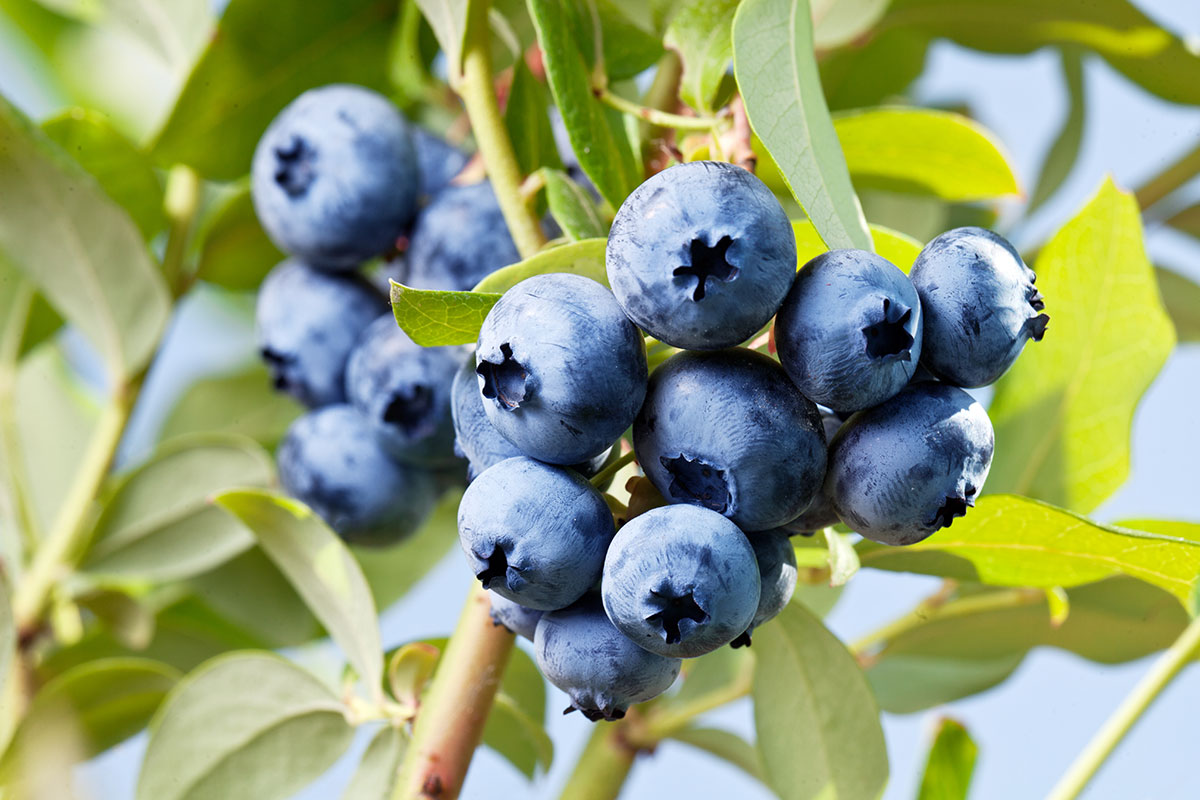In 2003 the United States Department of Agriculture established July as National Blueberry Month. Nice to have a whole month dedicated to one of my favorite things.
So here are a few interesting tidbits about these delicious berries. Blueberries belong to the family Ericales. This makes them related to cranberries, Brazil nuts, persimmons, camellias, azaleas, and rhododendron!
The silvery/whitish film found on blueberries is called a “bloom.” This is a natural compound that helps to protect the fruit. This is why you should never wash blueberries until just before you plan to eat them. They’ll last longer.
They are native to North America where they were gathered and eaten by Native Americans for centuries. As early as 1615, early explorers saw Native Americans making a pudding called “sautauthig” using dried wild blueberries, cornmeal, honey, and water.
Native Americans called blueberries “star berries” because of the shape of the flowers. They believe they were a gift from the Great Spirit to relieve the hunger of children during times of famine. Blueberries were also used medicinally.
The United States is the world’s largest producer of blueberries. As a matter of fact, the large juicy berries you find at the grocery store today are the result of hybridizing with the wild blueberry done back in the early 1900s in New Jersey.
The Important Facts
So here are the important facts: One cup of blueberries only contains 80 calories. It contains nearly 4 grams of fiber and 25% of the recommended daily allowance of vitamin C. They are considered a “super” food—aiding in heart and bone health, blood pressure, cancer prevention and preventing age-related mental decline. Blueberries contain an important phytonutrient called anthocyanin which is a powerful antioxidant. It’s the anthocyanin which gives them their blue color.
And they’re easy to grow if you understand their basic requirements. Blueberries, like their relative the azalea, need acidic soil. They do not tolerate wet feet, but are very shallow rooted so can’t go but so dry either. While they do prefer at least six hours of sunlight to produce well, they can tolerate some late afternoon shade.
Blueberries adapt very well to container growing and can easily thrive on a deck or patio.
Blueberries are partially self-pollinating, but you’ll get a greater yield if you plant two different varieties that bloom at the same time.
Of course, because the fruits are so delicious, you’ll want to invest in some bird-netting.
How to Celebrate National Blueberry Month
I’m going to celebrate National Blueberry Month by taking home a couple of pints of blueberries from our Farmers Market (every Thursday from 10 until 2 in the parking lot here at The Great Big Greenhouse) and making my grandma’s blueberry cobbler.
How are you going to celebrate? One way would be to go pick your own. To find a spot near you go to www.pickyourown.org.
Otherwise, look me up at our Farmers Market and I’ll show you local Virginia-grown blueberries!


So your blueberries are organic and not modified in any way?
I love blueberries and eat them EVERY MORNING with yogurt.
I’d like to eat the best quality possible and am constantly buying them from Costco, but they come from many different places.
Am somewhat concerned, but always buy organic and only wash immediately before eating.
Judy, the blueberries from the pots on my back deck are certainly organic because I am always an organic gardener. And it’s fun to know I grew them myself. As far as the ones from the grocery store, I do buy organic. At least I know, as of now, blueberries have not been genetically modified in any way. I love them in my yogurt at lunch, too!